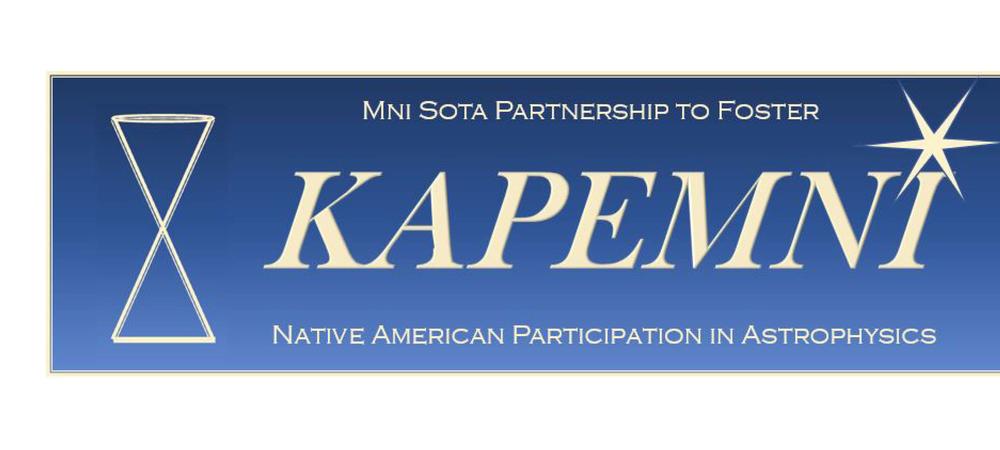
The National Science Foundation has awarded almost $240,000 over two years for a collaborative proposal between the Minnesota Institute for Astrophysics and the University of Minnesota Morris. The “Minnesota Partnership to Foster Native American Participation in Astrophysics” was developed by UMN Twin Cities faculty Vuk Mandic, Patrick Kelly, Lindsay Glesener, Claudia Scarlata and Michael Coughlin, and Sylke Boyd and Peter Dolan from the Morris campus. The goal is to provide a pathway for Native American students into graduate school in STEM disciplines, in particular astrophysics.
This collaboration is motivated by a severe underrepresentation of Native Americans in the field of physics. According to the American Physical Society, of the 8,300 annual bachelor’s degrees in physics nationwide, only 18-20 go to Indigenous students. The numbers are even worse at the graduate levels, with only 1 or 2 Indigenous people out of about 1,000 PhDs annually in physics and related fields nationwide.
This new program aims to improve representation of Native Americans among the scientific community, and among future faculty. Sylke Boyd, associate professor of physics, is leading the collaboration on the Morris campus. She believes this is a logical place to develop such a program because of its American Indian tuition waiver and the campus’s distinction as a Native American Serving Non-Tribal Institution.
“We have 30 students on average in our physics program at any given time, and a third of them are Native American. That means every year, UMN Morris is responsible for two or three of the bachelor’s degrees nationwide that are awarded to Native Americans. So this is the place to make it easier to get Native American representation to increase in the field.”
After much deliberation and search, organizers chose the name Kapemni for this program. Kapemni is a Dakota word for “to twist” or “to spin.” In Dakota sky knowledge, a Kapemni is a symbol of mirroring between earth and sky. It is drawn as two teepees connected at their apex. The bottom one represents the Earth, the top one is upside down and represents the sky. The apex is a point of passage between these two aspects of the world.
The Kapemni program will provide resources to improve visibility and accessibility of STEM disciplines through outreach and astrophysics-related events on campus, observing nights, and guest speakers. It will provide individual support to students in a variety of ways, such as stipends and cost-of-living support for research work or to take more specific electives in astrophysics on the Twin Cities campus for their Morris physics degree, and to develop mentorship relations with graduate students at the Twin Cities campus. There is also funding for faculty development and outreach, as well as some new equipment for the telescope on the Morris campus.
The Kapemni Program will host two events on the Morris campus on Nov. 8. That afternoon, from 4:30-6:30 p.m., Professor Jim Rock, retired astronomy faculty from UMN Duluth, will hold a workshop on Native American Astronomy. He will come with stories and artifacts about various Indigenous peoples of the Americas, including the Maya, Dakota, and Ojibwe. That evening at 7:30 p.m., Professor Vuk Mandic, Knight professor from the Minnesota Institute of Astrophysics, will hold a public talk titled "Observing the Universe with Gravitational Waves".